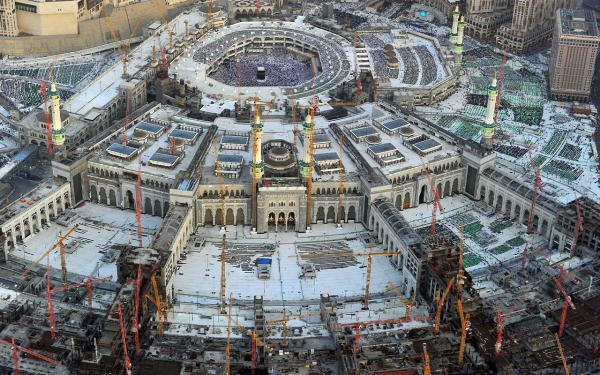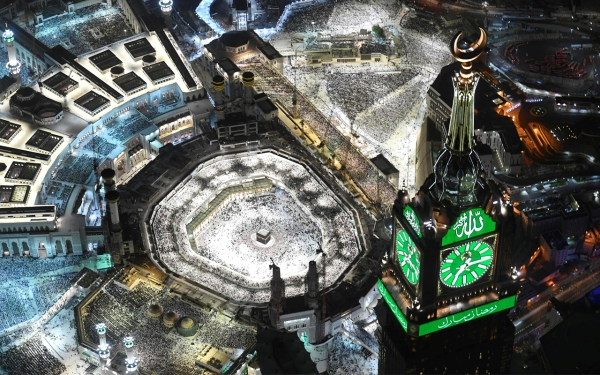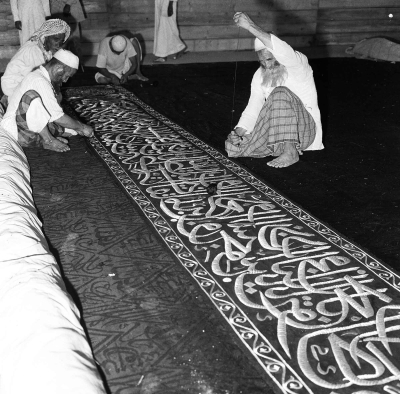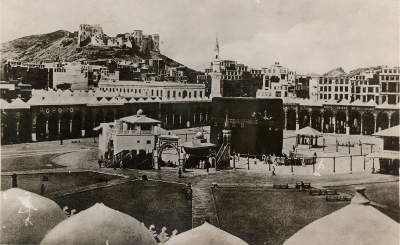


The Third Saudi Expansion of the Grand Mosque is the latest expansion of the Grand Mosque and the largest in terms of area and capacity throughout history. The expansion began during the reign of King Abdullah Bin Abdulaziz Al Saud in 2011. Its works were completed and inaugurated by the Custodian of the Two Holy Mosques, King Salman Bin Abdulaziz Al Saud, in 2015. Its work continues to this day.
Additions of the Third Saudi Expansion of the Grand Mosque
Four minarets were added during the expansion, distributed across various parts of the expansion. The expansion consists of six prayer floors and several facilities, the most prominent of which are: the main building on the northern side of the Holy Mosque; al-Masa'a expansion; the Mataf expansion; the outdoor courtyards expansion; the construction of service buildings and terraces; the hospital; pedestrian tunnels and transport stations; power stations and water reservoirs; and flood drainage.
Elements of the Third Saudi Expansion of the Grand Mosque
The expansion includes three gates, each opening with two leaves, with each leaf weighing up to eighteen t. They are operated by remote control devices and are located in the center of the northern courtyards, opposite the Haram Hospital and the pedestrian tunnels connecting the Grand Mosque to al-Hujun and Jarwal areas.
Five tunnels have been allocated for the services of the expansion, four of them for the transportation of worshipers and pilgrims, while the fifth is designated for emergencies and security routes. The total length of these tunnels is approximately 5,300 m. Additionally, there's a central services complex that includes power stations, backup generators, water cooling, waste collection, a reservoir, and fire-fighting water pumps. Also, there's the first ring road project located within the central area, stretching over 4,600 m, which includes bridges and tunnels to transfer movement from the central area to its outskirts with three lanes in each direction.
Construction of the Third Saudi Expansion of the Grand Mosque
The Third Saudi Expansion was built to the north of the Grand Mosque after removing 5,882 properties and compensating their owners. These properties were located in the districts of al-Shamiyah, al-Falq, al-Shubaikah, and al-Qarara. The expansion utilized over 13.1 billion rock pieces, three million m of concrete, eight hundred thousand t of reinforced steel, more than 210,000 m of marble surfaces, and 37,800 pieces of artificial stone.
Entrance to the northern expansion of the Grand Mosque is possible through 188 entrances distributed around the building. The expansion has over 12,400 restroom facilities, in addition to 8,650 ablution areas, 1,020 chandeliers, 3,600 wall lighting units, and 2,500 fire extinguisher boxes.
Digital systems in the Third Saudi Expansion of the Grand Mosque
The Third Saudi Expansion was distinguished by a number of digital services and advanced electronic systems. These include the use of specialized cameras and sensors to count the number of worshipers to avoid overcrowding. Additionally, there are 950 cameras, some of which are designed for night vision, as well as control systems for opening and closing the doors designated for security rooms and mechanical equipment.
The capacity of the Grand Mosque after the Third Saudi Expansion
The Third Saudi Expansion increased the capacity of worshipers in the Grand Mosque to 1.85 million. The total built-up area reached 1.47 million m, while the building footprint of the expansion itself is 320,000 m, accommodating three hundred thousand worshipers. Additionally, the courtyard's built-up area is 175,000 m, accommodating 280,000 worshipers.
The expansion includes several bridges with a combined area of forty-five thousand m, accommodating approximately fifty thousand worshipers. The service buildings occupy a space of 550,000 m and can accommodate more than 310,000 worshipers. The eastern terraces have a built-up area estimated at 263,000 m, with a capacity for more than 150,000 worshipers.
In the Third Saudi Expansion, the area of al-Masa'a expanded to fifty-seven thousand m, with a capacity to accommodate seventy thousand worshipers. The hourly capacity for the number of Umrah pilgrims has doubled, increasing from forty-four thousand to 118,000.
Related quizzes

